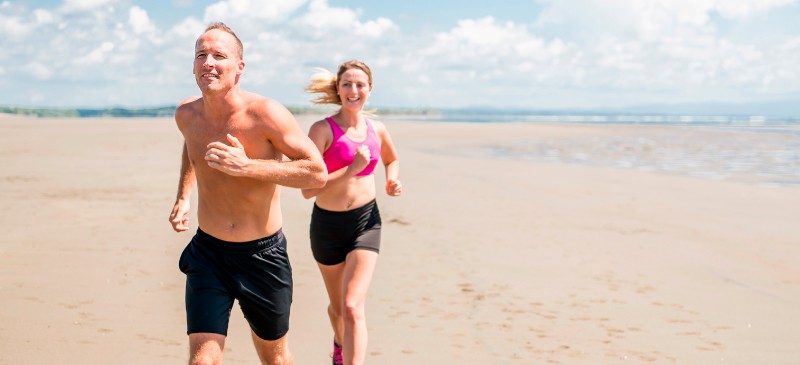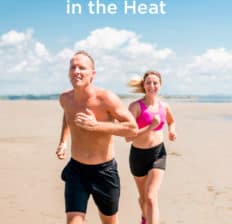This Dr. Axe content is medically reviewed or fact checked to ensure factually accurate information.
With strict editorial sourcing guidelines, we only link to academic research institutions, reputable media sites and, when research is available, medically peer-reviewed studies. Note that the numbers in parentheses (1, 2, etc.) are clickable links to these studies.
The information in our articles is NOT intended to replace a one-on-one relationship with a qualified health care professional and is not intended as medical advice.
This article is based on scientific evidence, written by experts and fact checked by our trained editorial staff. Note that the numbers in parentheses (1, 2, etc.) are clickable links to medically peer-reviewed studies.
Our team includes licensed nutritionists and dietitians, certified health education specialists, as well as certified strength and conditioning specialists, personal trainers and corrective exercise specialists. Our team aims to be not only thorough with its research, but also objective and unbiased.
The information in our articles is NOT intended to replace a one-on-one relationship with a qualified health care professional and is not intended as medical advice.
Tips for Working Out in the Heat Safely (Plus Its Benefits)
July 14, 2025

When nicer weather returns, it’s exciting to move your workouts outdoors, adding plenty of fresh air and scenic sights to the experience. However, working out in the heat can cause dehydration and overheating when it’s not done with caution.
There are ways you can work out in the heat safely, stay cool and maintain healthy hydration levels. With these simple tips, you can continue to enjoy the outdoors while getting in your daily physical activity.
Tips for working out in the heat
1. Hydrated and rehydrate
This seems pretty obvious, but staying hydrated is critical when working out in the heat. You will sweat out the water you drink, so it’s even easier to become dehydrated.
Research has shown that going into a workout hydrated is very important. Not only should you drink plenty of water before, during and after your workout, but eating foods that help restore electrolyte balance is also helpful.
Before and after exercise in the heat, eat or drink naturally hydrating foods that provide electrolytes, such as coconut water, watermelon, cucumber, celery, citrus fruits and carrots.
After workouts, be sure to replace water and sodium loss by drinking two to three extra cups of water and eating sodium foods, such as pickles and sauerkraut, and adding a pinch of sea salt to meals.
2. Plan wisely
If you plan to exercise outdoors, choose a cooler time of day when the sun isn’t shining on you at its hottest. Mornings and late afternoon/early evening are great times to work out, but minimize your exposure to direct sunlight.
3. Consider a pre-workout shower
Research has suggested that manipulation of pre-exercise body temperature can influence your workout performance and may be an effective strategy for athletes competing in stressful environments. Taking a cool shower or a quick swim before exercising in the heat is a good way to reduce body temperature.
4. Wear light-weight clothing
Avoid wearing dark-colored clothing when exercising in the heat. Go for whites or even bright clothes that reflect the sun.
You’ll also stay cooler with light-weight clothing and moisture-wicking garments that bring sweat to the outer surface and help keep you dry. You may find that loose-fitting shirts help keep you cool as well.
5. Bring an ice pack
If you become overheated, placing an ice pack on the back of your neck can help cool you down. You can also use a cold wash cloth to relieve the heat.
6. Listen to your body
It’s important to know your limits when exercising in the heat. If you begin to feel light-headed, dizzy or nauseous, it’s time to rest and drink water.
Excessive sweating can lead to heat exhaustion and have dangerous consequences, so monitor your water intake and energy levels as you go through your exercise routine.
7. Keep it short
If you’re not used to extended workouts in the heat, keep your routine short, starting at about 20-30 minutes. Let your body get used to physical activity in the heat, whether it’s outdoors or during a heated class like hot yoga.
8. Allow your body to acclimate
If you’re not used to exercising in the heat, give your body time to adjust. Gradually increase your exposure over seven to 14 days by starting with shorter, less intense workouts during the cooler parts of the day.
This process helps your body adapt by improving its ability to regulate temperature, increasing sweat efficiency and enhancing cardiovascular function. Skipping this acclimation period can raise your risk of heat-related illnesses.
9. Adjust your workout for the heat
Don’t push your body to the same intensity as you would in cooler weather. When working out in the heat, reduce the intensity, shorten the duration or increase your rest intervals.
Modify your training goals to maintain safety and performance without overexertion.
10. Use sun protection
Apply a broad-spectrum, sweat-resistant sunscreen with at least SPF 30 before heading outdoors. Wear light-colored, moisture-wicking clothing, a breathable hat and UV-blocking sunglasses to protect your skin and eyes from sun damage while exercising in the heat.
11. Understand your limits and take breaks when needed
Pay attention to your body’s cues. If you feel dizzy, weak, confused, nauseated or stop sweating, it’s time to stop immediately.
Rest in a shaded or air-conditioned area, and hydrate. Regular breaks, especially during high heat, can help prevent overheating and dehydration.
12. Consume cooling foods before and after your workout
Eating hydrating and cooling foods like watermelon, cucumber, oranges and coconut water can support thermoregulation. Before exercising in the heat, opt for light meals high in water content. Afterward, focus on replenishing fluids and electrolytes with nutrient-rich snacks or smoothies.
13. Be aware of humidity vs. dry heat
Humidity reduces your body’s ability to cool itself through sweat evaporation, making you feel hotter and more fatigued. Dry heat, while allowing for better evaporation, can cause you to underestimate how much fluid you’re losing.
Monitor both temperature and humidity before heading outside to ensure you’re prepared for the conditions.
14. Know the warning signs of heat exhaustion and heat stroke
Exercising in the heat increases the risk of heat-related illnesses. Signs of heat exhaustion include heavy sweating, cold or clammy skin, muscle cramps, fatigue, headache, and dizziness.
If not treated, it can progress to heat stroke, a life-threatening condition marked by confusion, rapid pulse, dry skin and body temperature above 103 degrees Fahrenheit. Call emergency services immediately if you suspect heat stroke.
Benefits of exercising in the heat
1. Improves your endurance
Exercising in the heat helps you become more comfortable with an uncomfortable setting. It forces you to push through the discomfort, thereby improving your tolerance for tough workouts.
Research has indicated that people who are more acclimated to the heat and fully hydrated have less body heat storage and perform optimally during exercise-heat stress.
2. Prepares you for competitive events
Because working out in the heat helps build endurance and tolerance to stress on the body, it can be useful in training for competitive events. Your ability to do intense workouts for extended periods of time will be greater after training in the heat.
3. Increases sweat and blood circulation
Your body naturally responds to heat exposure by increasing sweat production and blood circulation. Learning how to adapt to these circumstances allows your body to become more able to work out in a range of temperatures.
Plus, working out in the heat safely can improve your heart and sweat rate, thereby boosting cardiovascular health.
4. Promotes detoxification
Research has revealed that individuals routinely have sweating rates of one liter per hour when working in hot environments. This sweat rate promotes detoxification and allows your body to expel toxins within the body.
Remember that you need to replenish these fluids by drinking plenty of water after an outdoor workout.
5. May burn more calories
Working out in the heat can temporarily increase calorie expenditure because your body works harder to regulate its core temperature. This thermogenic effect may boost fat oxidation and metabolic rate, especially during moderate-intensity workouts.
However, this should not replace long-term strategies like strength training and consistent aerobic activity for weight management.
6. Helps enhance cardiovascular health
Exercising in the heat places greater demand on your heart and circulatory system, improving your cardiovascular efficiency over time. With proper adaptation, it may increase plasma volume, enhance cardiac output and improve endurance, making your heart stronger even during workouts in cooler environments.
7. Exposes you to vitamin D
Outdoor workouts in the sun support natural vitamin D synthesis, which plays a key role in bone health, immune function and mood regulation. Just 10-30 minutes of midday sunlight on exposed skin a few times per week can help maintain healthy vitamin D levels.
Be sure to balance sun exposure with skin protection to avoid burns.
8. Boosts mental health
Being outside in nature, soaking up sunlight and completing a challenging workout can all enhance your mood and mental clarity. Studies have shown that exercising in the heat, when done safely, can improve resilience, reduce stress and foster a greater sense of accomplishment.
Risks and side effects
When exercising in the heat, you need to know your limits and the warning signs of heat exhaustion. Everyone handles exposure to heat and physical activity in high temperatures differently, so you need to be aware of your personal limitations.
If you experience any of the following symptoms, it’s important to stop your workout, hydrate and get your body back to a normal temperature:
- fatigue
- weakness
- muscle cramps
- nausea
- vomiting
- headache
- dizziness
- problems with vision
- excessive sweating
- confusion
- low blood pressure
- dehydration
There are phases of heat-related health issues, starting with feelings of weakness and dizziness, experiencing heat cramps, and progressing to heat exhaustion and then heat stroke, which is a medical emergency that can cause serious damage. It’s critical to avoid any of these symptoms when taking your workouts outdoors or into high temperatures.
In addition, working out in the heat can be more difficult, which could lead to decreased exercise performance. If you plan on trying to avoid working out in the heat during the hottest times of the day, it also leaves you fewer time frames to exercise during the day.
Conclusion
- Just like working out in the cold, working out in the heat can be challenging and invigorating all at once. It helps promote detoxification and build endurance, but it can also be dangerous if it’s not done correctly.
- To work out in the heat safely, it’s critical to stay hydrated (drink plenty of water before, during and after your workout), eat or drink electrolyte foods, keep your workout time short, avoid hours of direct sunlight, wear loose-fitting clothing, and use an ice pack to cool yourself off.
- Exercise in the heat can be useful for promoting blood circulation and sweating, building tolerance to stressful situations, and making you a more competitive athlete. However, if you notice any signs of heat exhaustion or heat stroke, stop your workout, reduce your body temperature and hydrate.






